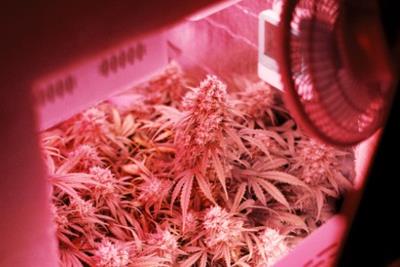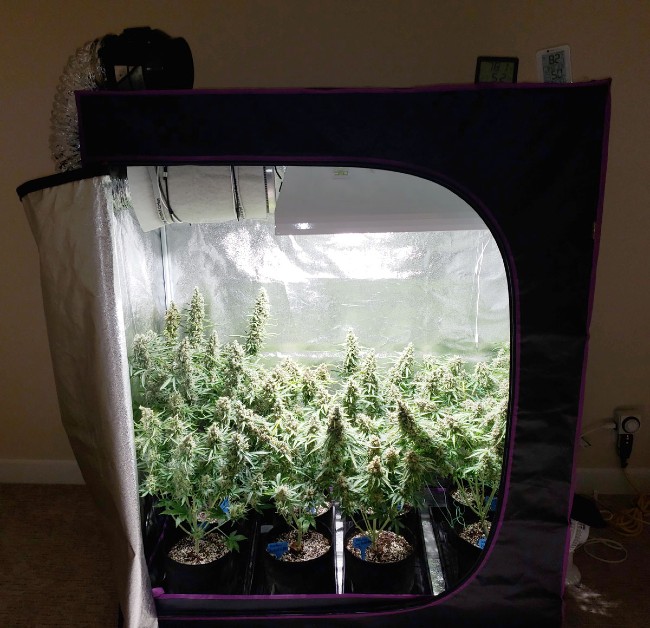
Friday June 18, 2021
By Trevor Ross
 Growing
Growing
As cannabis restrictions continue to lift nationwide, more people are beginning to grow their own cannabis, which has led to increasing questions about grow tents. Previously, we reviewed the best grow tents currently on the market, but the question remains: where to put the thing?
At a glance, the placement of a grow tent may seem irrelevant – or less relevant than where to put everything inside the tent. After all, grow tents are supposed to be contained and controlled environments, like a biodome, right? But there are several factors you’ll want to consider when placing your tent in or around your house.
Choosing a Location For a Grow Tent
As each grow is unique, there will be a number of variables to consider when deciding where to place your grow tent. Here are a few key factors to consider:
Space and Access
It’s tempting to buy a larger tent, particularly if the price difference represents a drop in the bucket of your initial investment. After a grow light, fans, ducting and so on, another $40 for a larger tent is not ridiculous. But consider the space you’ll be placing a tent in before you buy, then buy one that fits the space. Closets and crannies are attractive options, and a snug fit looks slick, but remember you’ll be moving tools, equipment, perhaps the whole plants themselves in and out as your work and clean your indoor garden. You’ll want to be sure you can comfortably move about.

Consider height as well, though it’s recommended beginners err on the taller side. More experienced growers who like to shape their plants can get away with shorter or smaller spaces if they like, but first-time growers are encouraged to give their new plants plenty of space to grow while they learn the fundamentals of the process. So you may want to avoid short closets or sloped ceilings.
Privacy / Security
Some states that allow cultivation still restrict growing within public view, or require security measures like locks and cameras. Baby monitors and other simple home security solutions make for easy surveillance. Consult your state’s cultivation laws to find out how they may affect the placement of your tent.
When growing in a tent, visual privacy becomes less of an issue, but you will likely be venting pungent exhaust that you may want to conceal as well.
Ventilation
Most growers will install an exhaust fan to draw fresh air in, and blow hot air out – but out to where? Venting exhaust out a window is perfectly practical, though it may cough cannabis smell into your neighborhood. Including a carbon filter in your exhaust system should erase most of the problem, but the exhaust may be obvious from the street. Consider putting a box fan in a window, and venting against that. From the outside, the fan should conceal any ductwork.
Noise and Light
The phrase “light leaks” plagues growers, who hiss like vampires at the sound of it. Chances are it will be a factor in purchasing your tent, so you probably want a dark space to avoid these incorporeal pests (if that’s not possible in your space, electricians tape over the seams is a crude but effective solution).
Consider as well how much light may shine out. When you throw open the tent to work, will your neighbors see the artificial summer glowing through your office window?
Noise shouldn’t be a problem for most growers, but it’s good to consider every element. Most of the noise will come from your fans. A common inline fan will run around 30 decibels, which is similar to a refrigerator, or rain. It’s up to you if you want that gentle white noise in your bedroom or that obnoxious hum down the hall.
Electricity
Between lights and fans, you can expect to draw about a thousand more volts out of your walls, so be sure the room you choose can support that. More ambitious growers in older homes may want to consider updating their power box, or the outlets in their grow room, but hobby growers with modest equipment should not have any problems. LED lights, in particular, use relatively little power.
Potential Damage
Most grow tents will not adversely affect their environment, especially if you’re prepared for how they could. However, grow tents harbor a lot of heat, and over time that may affect the surface it’s standing on. And while most tents come with spill trays, accidents happen, and you should consider the effects of spilling or leaking water into your chosen space. Heat and moisture can also warp wooden surfaces or discolor paint.

So while attics and closets offer convenient options for your tent, consider also what drawbacks they may have. Utility rooms, garages, and sheds are generally less of a concern for potentially damaging projects, but of course the value of your space is determined by you.
The Wrap Up
Ideally, the placement of your tent would satisfy each of these priorities. Of course, that’s likely not possible, so the next step is to identify your priorities. If you don’t mind who knows it, you could drop a tent almost anywhere in your house. Other growers may have their location dictated for them by accessibility or security.
Where have you set up your grow tent? Tell us in the comments!
Photo Credit: ArtHouse Studio (license)







